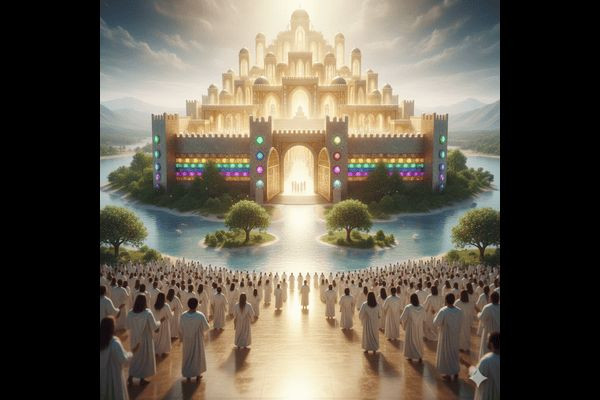What Does the Bible Say About Heaven? Exploring the Hope, Reality, and Purpose of the Eternal State
There is an innate, persistent yearning in the human heart for a place of ultimate rest. We all chase fleeting moments of peace, perfection, and fulfillment, knowing instinctively that this current world is fundamentally broken. This universal longing finds its definitive answer in the Christian revelation of Heaven. For billions, Heaven is not a mythological construct or a vague philosophical concept; it is the absolute certainty of an Eternal Dwelling provided by a loving God.
Yet, despite its centrality to the faith, many popular ideas about Heaven—from cherubs on clouds to eternal harp practice—are more rooted in cultural folklore than in Scripture. To truly grasp the Christian hope, we must turn directly to the source. What does the Bible say about Heaven?
This article will systematically unpack the biblical picture of our eternal home. We will first clarify the different ways the Bible uses the term “heaven.” We will then delve into the concrete realities of the Biblical Description of Heaven, emphasizing its physical nature as the New Jerusalem and the renewed Earth. Finally, we will examine the radical transformation of Life in Heaven, focusing on its true Purpose: unhindered, eternal fellowship with God. Understanding this profound Hope of Heaven is essential for any believer seeking clarity on their eternal destiny.
II. Terminology: Defining the Three Heavens
When seeking to understand what the Bible says about Heaven, the first crucial step is to recognize that the term itself is used in several distinct ways across Scripture. The original Hebrew word Shamayim and the Greek word Ouranos both carry a range of meaning, which theologians traditionally categorize into three levels:
A. The First Heaven: The Atmosphere
This refers simply to the sky—the realm of weather, clouds, and birds. It is the immediate atmosphere surrounding the Earth.
-
Example: “Look at the birds of the air [heaven]…” (Matthew 6:26).
B. The Second Heaven: Outer Space
This is the vast, stellar cosmos—the realm of the sun, moon, and stars. It speaks to the grandeur of God's physical creation beyond our atmosphere.
-
Example: “When I consider your heavens, the work of your fingers, the moon and the stars, which you have set in place…” (Psalm 8:3).
C. The Third Heaven (or Paradise): God’s Dwelling Place
This is the true, ultimate destination of the redeemed—the spiritual realm where God dwells in His glory and where the saints reside. This realm is utterly perfect and unmarred by sin.
-
Example: The Apostle Paul spoke of a man "caught up to the third heaven—whether in the body or out of the body I do not know, God knows.5 And I know that this man was caught up into Paradise..." (2 Corinthians 12:2-4).
When Christians speak of the Hope of Heaven, they are referring specifically to this "Third Heaven," the place of eternal reconciliation and rest. The rest of this article focuses exclusively on this ultimate and eternal state, seeking to define its nature.
III. The State of Heaven: A Place, Not Just a Feeling
One of the most common misunderstandings of the Biblical Description of Heaven is that it is an ethereal, non-physical state of mind—a vague existence as disembodied spirits. The Bible consistently presents Heaven as a place with real, substantial characteristics.6
A. Not a Cloud, But a City
The Heaven in the Bible is described not as an endless, shapeless void, but as a defined city.7 The final, eternal state—often called the New Heavens and New Earth—is concretized in the vision of the New Jerusalem Revelation.
The book of Revelation describes this city descending from God.8 It has gates, walls, foundations, and specific measurements (Revelation 21:10-18). It is a tangible reality, yet one created by God and characterized by perfection. The materials are precious and dazzling—walls of jasper, foundations adorned with every kind of jewel, and streets of pure gold, like transparent glass. This detail underscores that our eternal existence will be one of fullness and genuine, embodied experience, not merely a shadow existence.
B. The Eternal Dwelling: A Renewed Earth
A key eschatological concept is that our final destination is not entirely separate from the earth, but the renewal of the earth. The ultimate Eternal Dwelling is the New Heavens and the New Earth (Isaiah 65:17; 2 Peter 3:13). God’s plan is not to abandon His physical creation but to redeem and transform it utterly, removing the curse of sin and death. This means the redeemed will inherit a perfected cosmos, where the New Jerusalem is the centerpiece, symbolizing the perfect reconciliation of God and humanity dwelling together forever.








